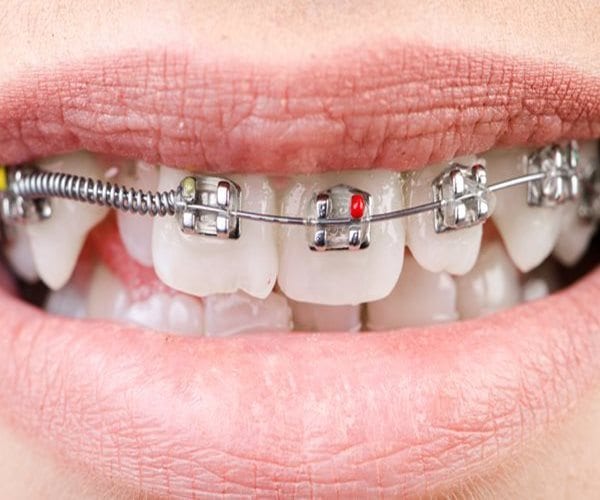Natural Health
Back Clinic Natural Health Functional Medicine Team. This is a natural approach to health care. It is a natural healing practice or a branch of alternative medicine that looks at nature for answers and explanations. There are a few Western forms of alternative medicine that NCCAM has classified as Biologically Based Therapies, as well as, Mind and Body Interventions used in stress management.
There is nothing magical about it. It is about natural healing therapies for prevention and healthy lifestyles. This means eating natural whole foods, nutritional supplements, physical exercise. This is nothing new, but it has evolved over the years within certain prevention parameters, and healthy lifestyles have proven to work repeatedly. There is nothing anti-intellectual or anti-scientific about it. All health, wellness, illness, and healing can be positively affected by simple and inexpensive natural therapies.

by Dr Alex Jimenez DC, APRN, FNP-BC, CFMP, IFMCP | Natural Health, Wellness
Could that glass of Chardonnay affect the condition of your skin?
Maybe, according to new research that found women with certain drinking patterns had a higher risk of developing rosacea, an inflammatory skin condition.
“We found white wine and liquor were significantly associated with a higher risk of rosacea,” said study senior author Wen-Qing Li. He’s an assistant professor of dermatology and epidemiology at Brown University.
Rosacea causes redness and flushing on the face and the neck. In some forms, acnelike outbreaks can form, and visible blood vessels can appear.
Genetics can play a role in the development of rosacea. In those with acnelike rosacea, their immune system may be reacting to a single bacterium, according to the American Academy of Dermatology.
While red wine is often pinpointed as the beverage that can trigger rosacea flushing, Li said that that information tends to come from reports by patients who already have the disorder.
The new research focused on alcohol’s role in the development of rosacea. Li’s team evaluated nearly 83,000 women enrolled in the Nurses’ Health Study II from 1991 to 2005.
The researchers collected information on alcohol intake every four years during a follow-up of 14 years. Over that time, nearly 5,000 new cases of rosacea occurred.
“For white wine, compared to never drinkers, [those who drank] one to three drinks per month had a 14 percent increased risk of rosacea. For five or more white wines a week, risk increased by 49 percent,” Li said.
For liquor, five or more drinks a week raised the risk of developing rosacea by 28 percent, the study found.
Li could not say if the link would hold true for men, as the study included only women. And, he points out that “it is just an association, it is not a causal relationship.”
Li isn’t sure exactly why white wine and liquor seem to increase the risk of rosacea. However, the researchers speculated that the white wine and liquor may weaken the immune system and contribute to the dilation of blood vessels.
For now, Li said, the message is to make physicians and consumers aware of the link.
The researchers also suspect that there are different biological reasons why white wine and liquor seem to increase the development of rosacea and why red wine seems to exacerbate the condition. But they don’t yet know what those differences are, the study authors said.
Dr. Carolyn Goh, a dermatologist at UCLA Medical Center, said the new findings add to knowledge about rosacea.
“It’s interesting that they found a difference between different types of alcohol,” she said.
One of the strengths of the research is the large number of women in the study, Goh said.
Meanwhile, she said, it’s known that drinking alcohol can make rosacea flare up in those already diagnosed. “In the past, people thought red wine would cause more flushing than white wine,” she said.
Besides alcohol, other common triggers in those who already have rosacea include sunlight, caffeine, hot and spicy foods, Goh said. People with the condition report different triggers, she said, so that list may not apply to all patients.
Treatments include topical creams and ointments, Goh said. Laser treatment can help the blood vessels that stay visible after periods of flushing. For patients who have pimples associated with rosacea, oral antibiotics can help, she said.
The study is published online April 20 in the Journal of the American Academy of Dermatology.

by Dr Alex Jimenez DC, APRN, FNP-BC, CFMP, IFMCP | Natural Health, Wellness
Many people are exposed to dangerously loud sounds at work and at play, and most of them don’t wear ear plugs or take other steps to prevent hearing loss, a recent U.S. study suggests.
Almost 49 million adults work in very noisy conditions, and more than one-third of them never use hearing protection, the study found. Among leisure pursuits, firearms pose a particular risk and just 59 percent of the 35 million U.S. gun users represented in the study wear hearing protection all the time.
“The problem here is both the number of people using firearms and the potential noise-inducing hearing loss from the repeated gunfire,” said senior study author Dr. Neil Bhattacharyya of Harvard Medical School and Brigham and Women’s Hospital in Boston.
“A rifle has an extremely loud single burst of sound and if you are firing hundreds of rounds, that can be very damaging, particularly without hearing protection,” Bhattacharyya said by email.
To assess how often U.S. adults are exposed to loud noise and how regularly they take steps to protect against hearing loss, researchers examined 2014 survey data representing 240 million people.
Overall, 22 percent were exposed to “very loud” sounds at work requiring them to shout to be heard at arm’s length. The exposures were for at least four hours a day, several days a week.
Roughly one in five people were exposed to loud sounds outside of work, and 62 percent of them didn’t use hearing protection, researchers report in The Laryngoscope.
With firearms, researchers found that one in five people who shot more than 10,000 rounds of ammunition in the past year never used hearing protection. Most of the firearm-related noise exposure came during recreational shooting.
Lawn mowers were the most common source of non-occupational noise exposure.
Almost two-thirds of people around loud noises during recreational activities never used any hearing protection.
One limitation of the study is that it only included one year of survey data, the authors note. It also didn’t have medical records to document specific hearing or health problems associated with noise.
“Untreated hearing loss is associated with increased stress, depression and social withdrawal, and may exacerbate problems for those with cognitive changes such as dementia,” said Dr. Jennifer Derebery of the House Ear Clinic and Institute and the University of California Los Angeles David Geffen School of Medicine.
If people aren’t sure whether the noise around them is loud enough to damage their ears, they can get a sound meter app for their phone and use ear plugs or other protection whenever the app shows the sound is too loud, Derebery, who wasn’t involved in the study, said by email.
And there are good options for people to wear when they still need to hear the sounds around them, a concern for many hunters and concert goers.
“There are outstanding electronic ear muff and ear plug options that solve many of the complaints that recreational shooters and hunters have related to conventional hearing protection,” said Colleen Le Prell, an audiology researcher at the University of Texas at Dallas who wasn’t involved in the study.
“They allow quiet sounds, such as speech and sounds the hunter might be making as they walk, to be not only delivered but amplified, which can be very useful with someone who already has some hearing loss,” Le Prell said by email. “Hearing loss can be prevented, with the consistent and correct use of hearing protection devices.”

by Dr Alex Jimenez DC, APRN, FNP-BC, CFMP, IFMCP | Natural Health, Wellness
Many studies have found that the first 1,000 days after conception have a strong influence on a person’s life expectancy and susceptibility to chronic disease. Low birth weight is one of the main markers used to identify stress in early life, such as poor nutrition during gestation, but it can be used only until birth — about 280 days — and is far short of the first thousand days.
But researchers from the University of Washington suggest that an asymmetric lower face is a strong marker that also suggests early life stresses.
“Asymmetries in the skull and teeth have been used for decades by anthropologists to mark environmental stress, but they have only rarely been used in living populations,” said Philippe Hujoel, a professor in the UW School of Dentistry.
“Such lower-face asymmetries can be assessed by looking at the dental bite in the permanent teeth — an exam that can be completed in seconds and with more certainty than a mother’s recall of birth weight and more ease than a search for a birth certificate.”
Hujoel described a crooked, or asymmetric, bite as the teeth biting backward or forward on one side of the face and normally on the other side.
He emphasized that crooked teeth, overbites and underbites are different than an asymmetric bite and can be associated with both asymmetric and symmetric bites.
Hujoel and his colleagues studied data gathered from 1966 to 1970 in a group of 6,654 U.S. adolescent 12- to 17-year-olds. The study found that one in four had lower-face asymmetries.
“Lower-face asymmetries were common in a generation that became typified by an epidemic of diabetes and obesity in adulthood,” noted Hujoel.
He says that further research is needed to identify whether lower-face asymmetries can predict chronic diseases in living populations in the same way that skull asymmetries have been associated with degenerative diseases in long-deceased populations.
Earlier studies have linked facial symmetry with health, but a British study published in 2014 found no links. It did, however, find a small correlation between symmetry and higher IQ.

by Dr Alex Jimenez DC, APRN, FNP-BC, CFMP, IFMCP | Natural Health, Remedies, Wellness
It’s that time of the year again when spring brings forth all her colorful glory — along with a host of potential allergens.
“It’s definitely pollen season,” Dr. Andy Nish, an allergy and asthma specialist from Gainesville, Ga., tells Newsmax Health. “And while we can help control our immediate environment, pollens can blow in from miles away to make our lives miserable.”
Allergies are the sixth leading cause of chronic illness in the United States with an annual cost in excess of $18 billion. More than 50 million Americans suffer from allergies each year.
Allergic rhinitis, often called hay fever, is a common condition that causes symptoms such as sneezing, stuffy nose, watery eyes and itching of the eyes, nose or the roof of the mouth.
You can try using antihistamines when the pollen hits and a nasal steroid prior to the onset of your seasonal woes, says Nish. But experts agree that natural remedies may be just as effective without the potential side effects of decongestant medications.
“When a person with an allergy encounters the offending substance, the immune system interprets it as the enemy,” Dr. Ellen Kamhi, Ph.D, tells Newsmax Health. “To help ward off the intruder, the human body activates antibodies and releases a substance called ‘histamine.’
“Allergy medications are called antihistamines because they attempt to turn off this natural, albeit overzealous body reaction. The result is that other body tissues get into the battle and impose a number of unpleasant side effects for the allergy sufferer. These can include annoying reactions such as rashes and scratchy throat but may become frightening, such as a closed throat and difficulty breathing.”
Kamhi says it’s important to identify the trigger and try to eliminate it from your environment.
“Interestingly, you may be eating honey made from the exact flower pollen that you are sensitive to,” she says. “The use of natural, nutritional herbs and supplements may be an extremely useful therapy to beat allergies along with changes in diet and lifestyle.”
Here is her recipe for an anti-allergy cocktail:
- 2000 milligrams powdered, buffered vitamin C.
- 100 milligrams B-6.
- 1000 milligrams magnesium.
- 1000 milligrams calcium.
- 250 milligrams bioflavonoids.
Mix the above ingredients in ½ glass of water and drink twice daily during an allergy attack.
Other helpful allergy-fighting herbs include:
Bromelain. This digestive enzyme from pineapple and quercetin, one of the bioflavonoids work well together to offset an allergic reaction
Milk thistle. This herb acts as a protector and regenerator of the liver and helps repair damaged tissue caused by allergens while supporting the actions necessary to deal with the accompanying symptoms.
Echinacea and goldenseal. These two herbs also work together to combat both the discomfort of allergies as well as reduce excess mucous from the nasal and respiratory tract, says Kamhi, the author of “The Natural Medicine Chest.”
Licorice. This is the most widely studied adrenal herb and has anti-inflammatory actions similar to the glucocorticoids — which are produced by healthy adrenals — that help resolve allergic reactions.
Green tea. This popular beverage is widely recognized as one of the best super foods for many conditions and it’s also beneficial for allergies. It contains a potent antioxidant called epigallocatechin or EGCG that impacts allergies at a cellular level by reducing inflammation.
Nish says that you can also reduce allergens by keeping windows in your home and car closed during the pollen season.
“Stay indoors during high pollen days and don’t dry laundry outdoors. Avoid bathing or brushing your pets outside as they can carry pollen into the home,” he adds.
“Buy a humidity gauge and try to aim for between 40 and 50 percent humidity in the home to deter unwanted houseguests like dust mites and mold. If the percentage is higher, you may want to invest in a good dehumidifier.”

by Dr Alex Jimenez DC, APRN, FNP-BC, CFMP, IFMCP | Natural Health, Wellness
The mixture of pollutants in many U.S. streams are more complicated and potentially more dangerous than previously thought, a new study suggests.
Researchers checked for 719 organic chemicals in water samples from 38 streams across the United States and found more than half of those chemicals in the different samples.
Every stream — even those in wild and uninhabited areas — had at least one of the chemicals and some had as many as 162, the study found. It was led by scientists from the U.S. Geological Survey and the Environmental Protection Agency.
The detected chemicals included: insecticides and herbicides, along with byproducts from their degradation; antibacterials such as triclosan; and medications such as antihistamines and the diabetes drug metformin.
Some of the chemicals were often detected together in streams. Further research is needed to determine the potential for complex interactions between these chemicals, to assess if they pose a threat to aquatic life, the food chain and human health, the researchers said.
The study was published April 12 in the journal Environmental Science & Technology.

by Dr Alex Jimenez DC, APRN, FNP-BC, CFMP, IFMCP | Natural Health, Wellness
Your weight just might influence your risk of migraine headaches, a new review finds.
“Those with migraine and [their] doctors need to be aware that excessive weight and extreme weight loss are not good for [migraine sufferers], and that maintaining a healthy weight can decrease the risk of migraine,” said study corresponding author Dr. B. Lee Peterlin.
She is director of headache research at Johns Hopkins University School of Medicine in Baltimore.
“Healthy lifestyle choices in terms of weight management and diet and exercise are warranted,” she added.
Migraines affect about 12 percent of U.S. adults, according to background information from Johns Hopkins. These debilitating headaches are often accompanied by throbbing, nausea and sensitivity to light and sounds.
Peterlin’s team evaluated 12 previously published studies with nearly 300,000 people, a process known as a meta-analysis.
The investigators found that obese people were 27 percent more likely to have migraines than people who were at a normal weight.
And those who were underweight were 13 percent more likely to have migraines.
The researchers used the standard definitions of both obesity — a body mass index (BMI) of 30 or higher — and underweight, a BMI of less than 18.5. A person who is 5 feet 4 inches tall and weighs 175 pounds has a BMI of 30, while someone of the same height who weighs 105 has a BMI of 18.
In previous research, Peterlin’s team found that the link between obesity and migraines was greater for women and for those under the age of 55. This new study reaffirmed those findings.
The new review found that the link between obesity and migraines is a moderate one, Peterlin said. It’s similar to the link between migraines and ischemic heart disease, in which the heart doesn’t get enough blood, she added.
Peterlin said she can’t explain with certainty how body composition affects migraine risk. But, she speculated that fat tissue “is an endocrine organ and like other endocrine organs, such as the thyroid, too much and too little cause problems.”
The change in fat tissue that occurs with weight gain or extreme weight loss alters the function and production of several proteins and hormones, Peterlin explained, changing the inflammatory environment in the body. This could make a person more prone to a migraine or it could trigger a migraine, she said.
However, the study only found an association, and not a cause-and-effect relationship, between weight and migraine risk.
The review was published April 12 in the journal Neurology.
Would weight loss or gain help? It’s not certain, Peterlin said.
“Limited data in humans show that in both episodic and chronic [migraine sufferers] who are extremely obese and undergo bariatric surgery for other health reasons also have a reduction in headache frequency by over 50 percent,” she said. Aerobic exercise has also been shown to decrease headaches.
“What is not yet clear is if it is the weight loss per se or other factors related to exercise that result in the improvement,” Peterlin said.
One headache specialist who wasn’t involved with the study lauded the findings.
The new analysis is “a valuable addition to the growing body of literature on migraine and body mass index,” said Dawn Buse, director of behavioral medicine at the Montefiore Headache Center in New York City.
With her patients, Buse said, she has seen migraine frequency increase with weight gain. And she has also seen improvement in migraines after weight loss, she said.
Buse acknowledged that, while weight loss appears to help, losing weight can be challenging. Health care professionals should discuss with their patients the relationship with migraines, and help them by providing education and referrals for treatments that may help weight loss.

by Dr Alex Jimenez DC, APRN, FNP-BC, CFMP, IFMCP | Gut and Intestinal Health, Natural Health, Wellness
Using antibiotics very early in life may lead to developing inflammatory diseases later in life, says a new report published in the Journal of Leukocyte Biology. Using antibiotics in infancy disrupts the normal development and growth of gut bacteria, and in addition to contributing to gut problems such as inflammatory bowel disease (IBD), the altered environment may contribute to other inflammatory diseases such as asthma and multiple sclerosis.
The study also indicates that altering gut bacteria may be a way to treat or prevent some inflammatory diseases.
“Our study demonstrates that gut bacteria in early life do affect disease development in adulthood, but this response can be changed,” said Colby Zaph �of the School of Biomedical Sciences at Monash University, Australia.
The study has important ramifications for using pre- and probiotics, in the administration of antibiotics to newborns, and to the understanding of how gut bacteria play a critical role in the development of �inflammatory diseases such as IBD.
For the study, scientists used two groups of mice. The first group included pregnant females treated with broad spectrum antibiotics during pregnancy and pups treated with broad spectrum antibiotics for the first three weeks of life.
The second group was a control group that consisted of untreated pregnant mothers and pups. The pups in the treated group were weaned at three weeks of age and antibiotic treatment was stopped at the same time. These pups had reduced levels of gut bacteria and were allowed to age normally.
At eight weeks of age, immune cells (CD4 T cells) from both the treated and untreated pups were examined for their ability to induce irritable bowel disease in other mice. The immune cells from antibiotic-treated mice induced a more rapid and more severe disease than those from the untreated mice.
Another recent study connected Gulf War Illness (GWI) to changes in gut bacteria. Researchers found that the chemicals, etc. that veterans were exposed to altered the microbiome � the bacteria that inhabit the gut. The affected microbiota then produce endotoxins, which pass through a thinned lining of the gut (called a leaky gut) and into the blood where they circulate throughout the body.
These compounds trigger an inflammatory response that, in turn, initiates several neurological abnormalities commonly observed in GWI, such as cognitive difficulties, widespread pain, and debilitating fatigue.









